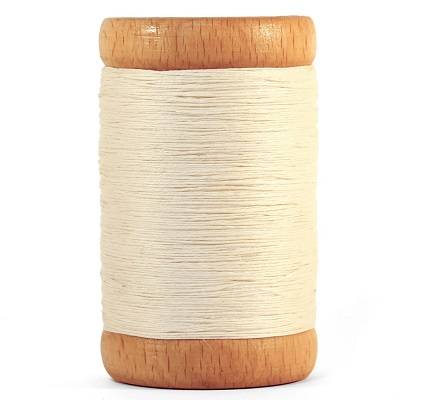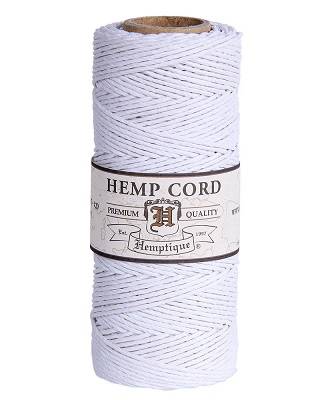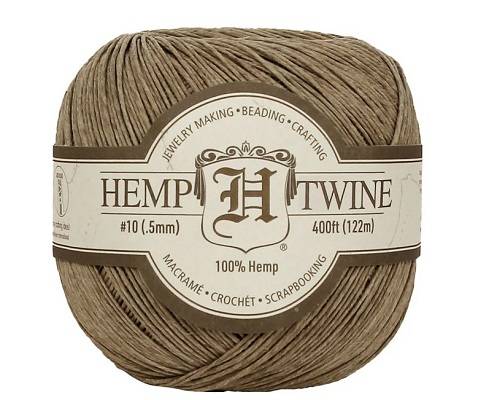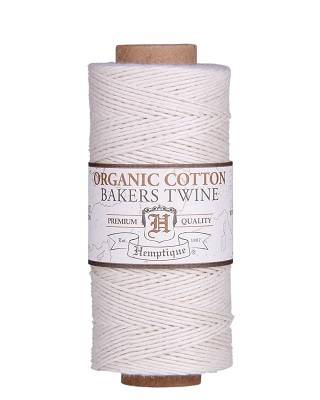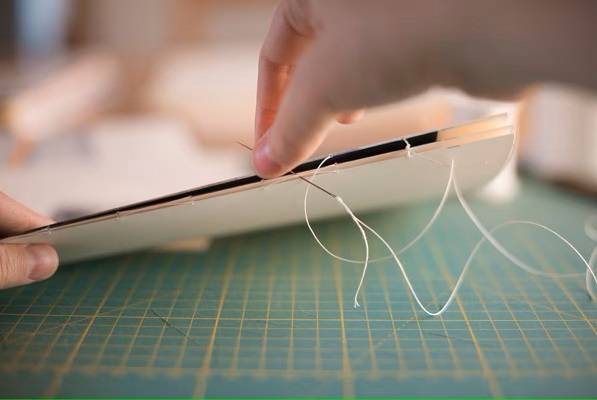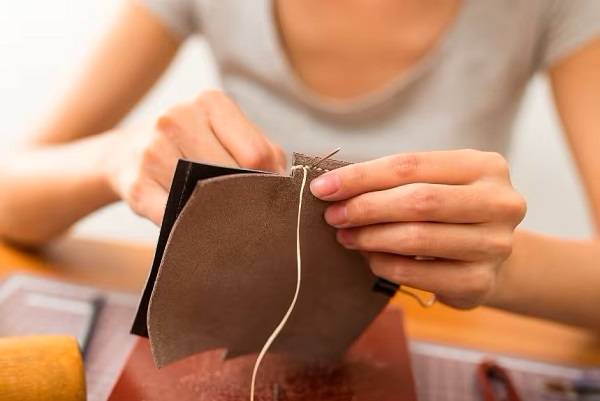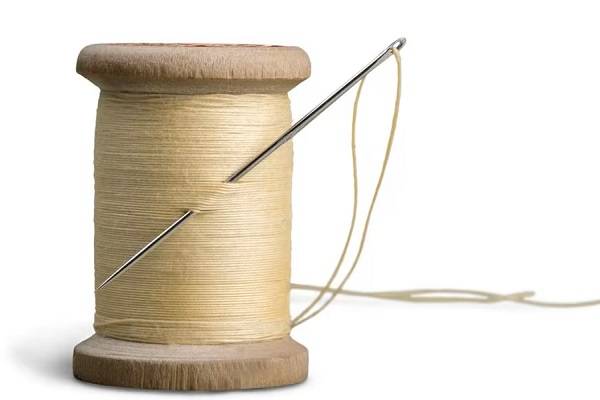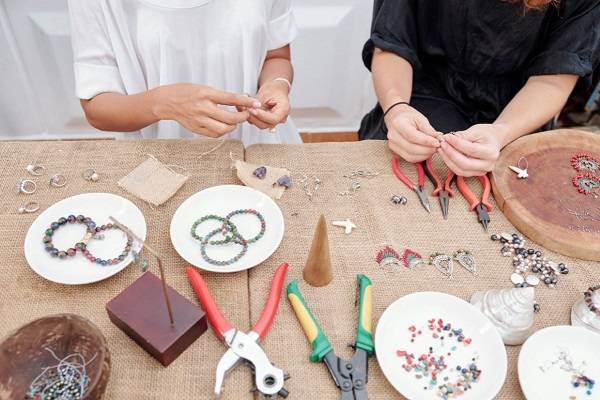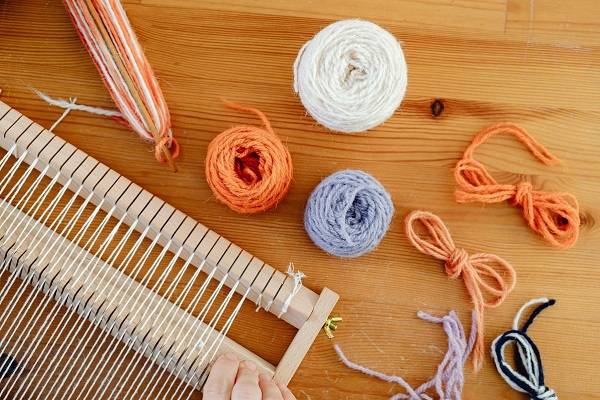Bookbinding Thread 101: What You Need to Know
Tips & Tricks on How to Pick The Right Thread for Your DIY Bookbinding Project. Understanding Various Thread Properties & How They Affect Your Work

Innovation & Quality
Developing and supplying premium-quality, sustainably grown, consumer products
100% Natural
Organically Grown and Ethically Sourced
hemp and other natural fiber products
Shipping
We offer fast shipping
Your order out within 1-3 days
Wholesale
Visit our wholesale portal to register or login to your account
If you are considering getting into binding books, it’s important to find proper thread because it will help you ease the learning process and help you work faster. As learning how to assemble a journal can be quite difficult for someone who is just starting out, the goal is to pick adequate bookbinding thread supplies and tools which will reduce frustration and boost your confidence. But, with so many varieties of threads available, how do you choose the right one for your needs?
The content provided in this guide is intended to help you learn more about the products you’ll be using in your DIY projects and also to help you improve your crafting skills faster, regardless of the binding technique you plan on using - Coptic stitch, pamphlet stitch, or side sewn stitch.
Shop High-Grade, Eco-Friendly Bookbinding Thread at Hemptique
If you want to get into the art of assembling books and want to acquire top-quality supplies, you have come to the right place. Hemptique is a trusted supplier of premium cordage, fit for all types of projects and all skill levels. Our goal is not only to supply you with strong and durable fibers, but also to make a positive impact on our environment by manufacturing biodegradable, eco-friendly craft supplies made of hemp, linen, organic cotton, and bamboo. Our threads are exceptionally durable, strong, and do not fray, making them ideal for assembling diaries, journals, ledgers, and registers together. Our bookbinding product selection includes Premium linen thread, Hemp twine, #10 Hemp cord (0.5mm), #20 Hemp cord (1mm), Bamboo cord, and many others. We also offer great perks for anyone who applies for a wholesale account or those who want to order in bulk.
Why Proper Thread Matters
Finding adequate string for sewing books by hand is essential because the quality of fiber has a direct impact on the longevity and appearance of end product. It ensures the book opens smoothly, the spine holds together well, and prevents unsightly bulges or paper damage caused by poor thread quality (acidic materials).
In general, when you first set out on this crafting journey, you will most likely use any type of yarn or string you have laying around the house to practice various binding styles. You’ll probably buy bargain no-name brands, thinking all threads are the same. However, after completing a few projects and experiencing frustrating setbacks such as book falling apart, excessive spine swelling, or paper deterioration, you will eventually realize how important it is to have better quality thread. As you progress through practice, you will probably want to switch to higher-quality fibers so that your handmade items can endure wear and repeated opening and closing without affecting the quality of paper or the shape of spine.
- Frail binding that causes the book to fall apart easily.
- Bulging spine that creates an unsightly, uneven surfaces.
- Paper degradation due to damage caused by acidic materials.
- Difficult handling can be caused by poorly chosen thread that prevents the book from properly opening.
Main Features to Consider: Type, Size, Thickness, & Ply
Thread used for sewing has many features that make it fit (or unfit) for use in DIY bookbinding. You might recognize these when shopping for them online or in stores, so it’s wise to familiarize yourself with the basics of what each of these attributes means and how they impact your work.
Thread Type (Material)
When it comes to sewing thread, the most important thing is to ensure that the material is strong enough, that it’s not acidic and it doesn’t use dyes that will damage the paper. By following these fundamental rules you will be able to find the most suitable string that meets the requirements of your project and ensure better durability. Below is a list of the most commonly used bookbinding fibers based on their type (source).
Linen Thread (Most Used)
Linen thread has been traditionally used in bookmaking and it’s considered a golden standard due to its remarkable strength and long life cycle. Initially it’s not as stretchy as some other materials, which is why it is suitable for tighter bindings; however, it does stretch a bit over time, so it’s good to have this in mind before starting your stitching project.
Use fine linen string (0.6mm) for straight backs, and thicker linen thread (1mm) for rounded spines. Made form high-grade, lightly waxed flax fiber, this product can safely be used for assembling books as well as other crafts. It’s considered very strong (twice as strong as cotton), it’s naturally robust, and very resistant to tearing.
- Material: 100% finest Egyptian flax fiber
- Size: 12/3 (1mm) and 18/3 (0.6mm)
- Finish: Lightly waxed
- Colors: natural (white, bleached) and black
Hemp Cord (Eco-Friendly & Rustic Option)
Hemp is another material commonly used by binders around the world. It’s quite sturdy and lasting, and even stronger and more robust than linen, because of its longer fibers. Furthermore, it has high resistance to wear and tear, so it’s perfect for crafting scrapbooks, artbooks, ledgers, registers, and other larger binding projects.
Hemptique offers premium quality bookbinding Hemp cord in various sizes and colors, suitable for bookbinding craft. 1mm cord is favorite among crafters, although you can find thinner and thicker versions, depending on how large the book you’re making is or how intricate detailing is.
- Material: 100% hemp
- Size: #20, 1mm
- Finish: polished
- Main features: Biodegradable, 20+ different colors, AZO-free dyes
Hemp Twine (For Exposed Spines or Japanese Technique)
Hemp twine can also be used for assembling signatures of paper into a book. Twine is an excellent choice for making rustic looking items that facilitate natural look. In fact, it’s ideal for books with exposed spines or Japanese stab binding technique. Hemp twine has incredible strength and is naturally resistant to mold and UV lights.
- Material: 100% hemp
- Size: #10 (0.5mm), #20 (1mm), #48 (1.8mm)
- Finish: Slightly polished
- Color: Natural, not colored
- Main features: Biodegradable, ethically sourced
Cotton Thread (For Small Projects)
Compared to linen or hemp, cotton string is not as strong; however, it’s cheaper and easily available, so it might be a good solution for some binders. You need to be careful about choose the right projects to use cotton on, or trying double stitching technique for improved strength. There are different grades of cotton thread grades with various tensile strengths.
Organic cotton baker’s twine is good solution for basic stitching and binding of smaller and thinner books. Cotton is gentle on the hands and easy to work with, but do not expect it to last you as long as some other materials.
- Material: 100% organic cotton
- Size: 1mm
- Color: natural white
- Main features: 2x2 ply, eco-friendly, biodegradable
Commonly Used Thread Sizes
Another attribute that contributes to fiber’s strength is its thickness. Thickness also refers to gauge, while the ply refers to the number of strands in the thread. As a general rule, the thicker the string, the stronger it is. In addition, when you use thicker cord, there is no need for double stitching, which saves you time and supplies. However, heavier threads tend to be more difficult to handle, especially if you are working on a complex stitching pattern. You will need to apply more strength when sewing and piercing with needle through materials. Bear in mind that the knots will also be larger, with less pleasing appearance. Ideally, use thicker threads for project that require exposed stitches.
Thread gauge and ply is marked with numbers that look like this – ‘12/3’, where the first number denotes gauge and the second number denotes the number of plies. The smaller the gauge number, the thicker the tread. And the larger the ply number, the thicker the thread. 3-ply is considered an all-around size for various types of stitching techniques.
| GAUGE | PLY NUMBER | DIAMETER IN MILIMETRES |
|---|---|---|
| 12 | 3 | 1mm |
| 18 | 3 | 0.6mm |
| 25 | 3 | 0.5 |
| 30 | 3 | 0.5mm |
| 35 | 3 | 0.40mm |
Here’s how some of the gauge/ply combinations are best used in bookbinding:
- Closed spine – Use smaller gauge for closed spines (such as case binding), because the string will be covered. Use 25/3 or 30/3 cord.
- Exposed spine – In exposed binding (Coptic, long stitch binding, art journals), it’s better to use thicker cord because it provides better support. Try either 12/3 or 18/3 thickness.
- Lighter weight paper (for writing) – For making this type of handmade book use thinner thread. 12/3 or 18/3 will fit these requirements.
- Heavy weight paper (sketching paper) – To provide enough support, use thicker thread such as 18/3 or 25/3.
Waxed vs. Non-Waxed Threads
You may buy waxed or unwaxed string. However, it’s highly recommended to buy a pre-waxed thread or to at least get a piece of beeswax you can use to wax the fiber. This is because wax minimizes friction, reduces fraying, prevents tangling, and enables you to smoothly run the thread through paper (or other materials) while binding. Another reason why some crafters may prefer waxed thread is because it has better grip on paper, particularly in techniques like Coptic binding. For more information on the difference, read our Guide on waxed vs non-waxed thread.
How to Wax Bookbinding Thread
The most common type of wax for fiber coating is beeswax. This is because it improves fiber strength and it is naturally water resistant, meaning it protects the fiber from accumulating moisture. To properly wax the string, follow these steps:
- Cut the length of cord you plan on using.
- Run the wax across the surface of the thread, ensuring you cover the entire length.
- To ensure even coating, run the wax again. Remove the excess product by running the thread through your fingers (or a piece of cloth).

Final Thoughts on Best Bookbinding Treads
Although sewing thread may seem like an insignificant component in bookbinding, you shouldn’t underestimate the significance of acquiring quality product because the quality of fiber can greatly affect the final outcome of your crafting, and your enjoyment during the process. While some bookbinders swear by certain brands, in reality, it comes down to availability and your budget. For this reason, choosing quality threads like linen, hemp, cotton or bamboo will result in a better quality finish and less frustration during the crafting process. The key is to find what works for you best.
Explore Our Knowledge Base to Learn about Different Ways to Express Yourself
Don’t miss an opportunity to visit our Knowledge Base. It offers a collection of tutorials, beginner guides, and project ideas for crafters looking to expand their knowledge and find more inspiration. Our goal is to support artisans by building a crafting hub that includes various hobbies, fresh perspectives, and new concepts. Our easy-to-follow tutorials and guides are suitable for all skill levels and age groups, including kids, so all visitors can benefit from our material. By sharing valuable tips and DIY projects, we aim to build trust and credibility within the crafting community and share our passion for artisanal handicrafts.


